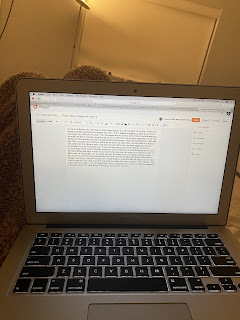Audience and Institutions Essay
To what extent is digital distribution vital to the media area you have studied?
In relation to film, digital distribution is vital to achieve success. Digital technology is constantly evolving, and shaping our world in a new way that film was not able to achieve before. New technologies are allowing filming companies to distribute their films in ways that would not have been possible many years ago. Overall, digital distribution of film is crucial to evolving and shaping the filming industry that we know today.
Digital distribution in the filming industry is only possible with the assistance of new technologies. According to the case study entitled, “How is Digital Technology Reshaping the Film Industry?” they provide us with 5 different technologies that are the “forefront” of the evolving industry. These 5 technologies are: Autonomous Drone Cameras, 3D Printing, 4K 3D Cameras, Algorithmic Video Editing, and Cloud Based technologies. All 5 of these new technologies are the key to success for digital distribution in the filming area of study. However, there are one of these technologies that have made a noticeable change in the industry, Cloud Based technologies. Since Cloud Based technologies make it possible for citizens to view at home, this has, “reduced in-house costs.” Therefore, many more people are able to view all of these films at home for a lower cost, giving the production company more business and attraction. This is just one of the many assistants of digital distribution in filmmaking that has changed the industry as we know it.
One example of a film that flourished from digital distribution is Beauty and the Beast. This film was released on March 17 of 2017 in theatres, but it did not fully flourish until it hit its digital distribution phase. According to the Beauty and the Beast case study we were given, this film took 3 major steps in digital distribution. First, on June 6th of 2017 (shortly after it was first released,) this film was also released on Blu-Ray, DVD and Digital HD. Then, it was released on ‘Netflix’ thereafter, finalizing with its release on ‘On Demand’ in 2017 as well. This film is well-known all around the world and this is partially due to the digital distribution that this film participated in. Placing 76th worldwide and making 1.3 billion dollars, it is clear that digital distribution was a crucial step to this film’s success. However, Beauty and the Beast is not just the only film example of benefiting from digital distribution.
Another film in which digital distribution was vital to its success was Black Panther. Released on February 16th of 2018, this movie has become one of the most popular films in all the industry, profiting 361 million dollars in its first week of release alone. However, this success could not have been possible without the process of digital distribution. This film chose to take a different route and take a creative stance by making a website for the film. This website was created by Marvel, and it was used as a form of digital distribution to make the film more popular, and more accessible for the general public. According to the Black Panther Case study we were given, this website includes: “movie tickets, an online shop to buy merchandise from, a photo gallery, the cast, and more.” This was a unique aspect that Marvel took to produce their movie successfully, and this process was vital to the popularity that this film has gained globally.
Another aspect to digital distribution that has greatly affected the filming industry is the major decrease in costs that comes alongside it. There are many downsides to producing a film, and one major aspect is the cost. Sometimes, this can be so detrimental to a filmmaking process that it is forced to be shut down. However, with the process of digital distribution, most of this problem disappears. Yes, there are still major costs that come with producing a film and distributing it digitally, but nothing in comparison to the normal filmmaking process. According to the case study entitled, “How Tech Has Shaped Film Making,” it states that Going digital largely means foregoing the large canisters of film that used to be synonymous with filmmaking.” Simply by eliminating the usage of large canisters of film, the overall cost of production greatly decreases, leaving the company with more profit, therefore making the film more successful overall. Additionally, this means that they complete their “film schedules with less waste,” therefore keeping the cost of production much lower than the original process. As you can see, the digital distribution process is crucial to a film's success, especially in lowering the costs.
Overall, the filming industry can not succeed alone. With the assistance of digital distribution, a film can flourish, and become well-known globally. Just like Beauty and the Beast and Black Panther, many other movies have followed in these footsteps and have only seen major success. Many companies use this strategy for many reasons, one of which is the drastic decrease in cost. Another aspect that has really assisted the digital distribution process is the Cloud Based technologies, as mentioned before. All of these aspects to digital distribution are what really makes a film flourish, as these are vital to any film's success.


